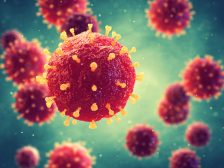Selective Breeding

Selective breeding entails the breeding of organisms with desirable characteristics.
Reviewed by: Mary Anne Clark, PhD
Thousands of years before Darwin proposed evolution by natural selection and Mendel discovered the principles of inheritance, humans were practicing selective breeding of both plants and animals. The success of selective breeding by humans was part of Darwin’s argument for the role of natural selection in evolution, and had provided Mendel with a variety of garden peas for his own work on inheritance. Humans could see that the offspring of plants and animals resembled their parents long before they had any idea how inheritance might work, and used their observations to actively manipulate the phenotype of various plants and animals by selective breeding.
Breeders of animals and plants in today’s world are still interested in producing organisms that will possess characteristics desirable to humans, such as high crop yields, more milk production, larger fruits, resistance to disease, high growth rate and many other phenotypical characteristics.
Selective breeding is done by crossing two members of the same species which possess particular physical or behavioral traits, such as friendliness in dogs, speed in horses, or large ears in corn. In addition individuals with one set of desirable traits, like large seeds, might be crossed with individuals with fast growth. If these traits were associated with dominant alleles, then offspring with both traits might appear in the first generation of hybrids. Breeders continuously track which characteristics are possessed by each organism so when the breeding season comes once again, they can selectively breed the organisms to produce more favorable qualities in the offspring, and ultimately produce pure-breeding stocks with the desirable set of characteristics.
However, in many cases, the most desirable combinations are in heterozygous offspring, meaning the allele for each characteristic will possess one dominant and one recessive gene. In that case professional breeders have a true breeding cross (i.e. AAbb) that provides a gene bank of these qualities that can be crossed with aaBB to reliably produce heterozygous offspring. This process of selecting parents is called artificial selection or selective breeding and has allowed our species to increase the efficiency of the animals and plants we breed, such as increasing milk yield from cows by continuously breeding selected animals with one another to produce a hybrid.
Inbreeding Depression
However, while it is an advantage to humans to produce these desirable qualities, continuous inbreeding and selection of particular genes runs the risk of losing some of the other genes from the gene pool altogether, which is irreversible. This is called inbreeding depression, since the overall diversity of the species is reduced. In the long term, it is more advantageous for organisms retain their genetic diversity.
Genetic diversity means the gene pool of a species is prepared for a wide range of scenarios such as food shortage or an epidemic of disease. Some genes in some organisms may provide the organism with immunity against various diseases or the ability to go for long periods of time without food. If continuous inbreeding has occurred in a species, some of these genes may have been phased out due to the breeder wanting other desirable genes to be present in their crop….
Genetic diversity in the long term is reduced, because many organisms end up with similar genomes due to breeding with each other constantly. In normal circumstances, this process would be random and would produce more variable offspring
To ensure the long term welfare of the species they are breeding and their own livelihood, the most important thing for breeders is to keep the gene pool of the breeding stock as diverse as possible while enhancing the traits useful to humans. With this in mind, humans have gene banks to preserve the genetic information in the case of extinction, and nurture species that are at dangerously low population levels.
Ironically, the human interference that has disrupted so many species can now provide a means of placing genes into organisms, therefore preparing them for hypothetical scenarios such as epidemics or climate change. Genetic engineering would provide the means of allowing organisms to suit their environment without the trial and error over time that comes from natural selection.
The next tutorial investigates genetic engineering and the distance it has come.
 | SELECTIVE BREEDING – QUIZ This quiz is meant to test the students’ understanding of selective breeding. The first part is identifying the correct ideas that will complete the text. The second part is a true-or-false type of quiz on selective breeding, inbreeding depression, gene pool, and genetic diversity. Subjects: Genetics & Evolution |
You will also like...

Freshwater Lentic Communities & Animals
This tutorial looks at some of the communities in freshwater lentic habitats. For instance, symbiosis occurs in a commun..

Pollution in Freshwater Ecosystems
There are many environmental factors that arise due to the usage of water in one way or another and for every action tha..

Biological Viruses
Viruses possess both living and non-living characteristics. This unique feature distinguishes them from other organisms...

Lotic Communities & Algae
Lotic communities have conditions that are rather harsh for typical plants. Thus, the diversity of plant species in loti..

Photosynthesis – Photolysis and Carbon Fixation
Photosynthesis is the process that plants undertake to create organic materials from carbon dioxide and water, with the ..

Still Water Animals
Animals living in aquatic habitats have diversified and evolved through time. They eventually occupy ecological niches a..
